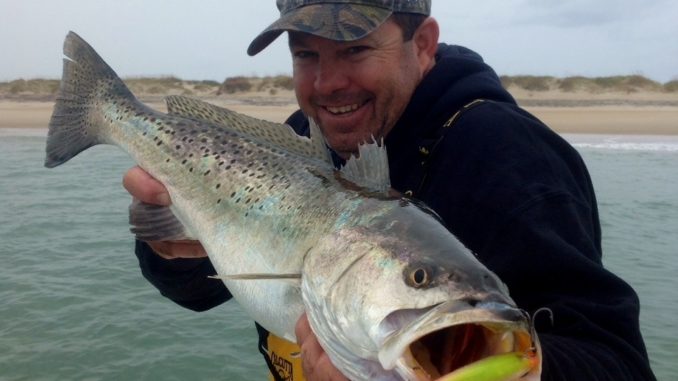
From Thanksgiving to Christmas, the waters around Harkers Island are full of fish, but not boats. Here’s how to make the most of having the place to yourself.
Once the weather begins to cool around Thanksgiving, many fishermen clean their gear and winterize their boats for storage until spring. Fishermen who put on a jacket and continue to fish really appreciate this. The shorter lines at launching ramps and reduced competition for preferred spots makes catching a limit of specks and reds much easier.
Noah Lynk of Noah’s Ark Fishing Charters in Harkers Island loves to catch late-fall specks and reds; he knows they haven’t left the waters around his home base.
“I really like our fall and early winter fishing,” Lynk said. “The water and air have cooled a little, but it isn’t cold yet. Many mornings you put on a jacket for the ride to where you’ll fish, but the days usually warm, and before long, you’re peeling it off to keep from breaking a sweat. These are good days for fishing, and when you find the fish, they’re usually hungry and biting.”
Lynk fishes several areas; his choice of location and relocation is determined by the presence of bait, wind speed and direction, and the tide. December’s foremost wind is northeast, which creates a lee from Cape Lookout along Shackleford Banks to Beaufort Inlet and allows fishing near the beach, even on gusty days. The tide changes about every six hours, so Lynk can plan trips to be at his preferred spots when the tide is right at each.
Starting in the ocean, one of Lynk’s favorite spots is at the Cape Lookout rock jetty, a well-known and popular spot that can attract a real crowd until Thanksgiving. After that, however, Lynk said you might have fish be able to fish by yourself or with only another boat or two.
“The jetty will produce fish on rising and falling tides, but the fishing usually goes flat when the tide goes slack during the change,” Lynk said. “There has to be moving water to pin bait to the jetty, and that’s when the fish are feeding. “
Lynk likes to have the wind at his back to help increase casting distance, because there are days when it’s nearly impossible to cast into it. He tries to concentrate on fishing the falling tide and anchoring on the upcurrent side of the jetty — closest to Shackleford Banks. Lynk believes the current pushes bait up against the jetty and fish move in to feed. Trout are near the bottom and reds, plus some scattered black drum and an occasional late flounder, are on the bottom.
Lynk prefers to fish soft plastics and sinking MirrOlures at the jetty, being careful not to let them fall into holes in the rocks. He likes Sea Striker’s new Cedrus lures; because they sink quickly and will pop to the top if twitched hard, he has to fish them slowly and subtly. He prefers not to fish live baits at the jetty once the water gets colder, but there are some days that’s all fish will hit. Mud minnows are the natural cold-water forage, so he uses them, fishing them on short leaders under a Cajun Thunder popping cork, well up the jetty, even on top of some of the lower sections at high tide.
“Some fishermen like to beach their boats in the hook and walk across the dunes to fish the jetty by casting from the beach,” Lynk said. “This can be very effective, especially in the early morning and late afternoon. Some fishermen also like to fish after dark.
“Fishermen without boats can try these techniques fishing along the jetty at Fort Macon,” Lynk said. “It isn’t as consistently productive, but there are good and better days. One of the best things about fishing the Fort Macon jetty is you can drive to the parking lot and walk to it. This makes it a great place for a quickie fishing trip when you don’t have a lot of time.”
Lynk also fishes for December trout and reds inside the inlets. He said there are good fishing spots from Cape Lookout and Shackleford Banks through Middle and North River marshes and the Haystacks to the back of North River, Ward’s Creek, Core Creek and the Newport River.
“The easiest spots to find are the bridges,” Lynk said. “There are two bridges crossing from Straits to Harkers Island — one at North River, and another at Wards Creek. There is a Carteret County pier by the smaller bridge between Straits and Harkers Island, and a surprising number of trout are caught from it. Fishermen also walk the rocks between the Harkers Island bridges and occasionally some even wade to fish, especially near the ends of the North River and Wards Creek bridges.”
Learning to read moving water and current trails is important, because trout and reds like to be near current that’s strong enough to trap and carry bait — but not be in the current. Lynk looks for spots where the current trails off a point or oyster rock, where fast-moving and slower-moving waters are side-by-side. Cast to the break between the two currents with either soft-plastic or hard baits; the latter often attract larger fish. Lynk likes a slow retrieve, twitching baits occasionally while they drift with the current. Slow is the key word.
“In cold water, the trout bite — especially inshore — will be light; just a little tic, so be ready” Lynk said. “Most of the bites will be as a soft-plastic bait falls or just after twitching a MirrOlure. The exception is the Cedrus. They often hit it as it peaks and pauses briefly just before it starts falling.
“Reds will pick up the baits similarly, except they will sometimes let it settle all the way to the bottom before picking it up. Their bite will be a solid thump, and they may take off immediately or not move until you set the hook. When you feel something, set the hook firmly, but you don’t have to rear back like so many fishermen do on TV.”
DESTINATION INFORMATION
HOW TO GET THERE — Harkers Island lies inland of Barden’s Inlet and Cape Lookout, on CR 1332 (Harkers Island Road), which can be reached from US 70, a major east-west thoroughfare across North Carolina that leads through Morehead City to Beaufort and toward Harkers Island. A public ramp is on the mainland just before the bridge to the island. A handful of marinas on the island operate for-fee ramps.
WHEN TO GO — Speckled trout are in Harkers Island waters year round, and many fishermen consider November and December prime months; in mild winters, good fishing will extend into January.
TACKLE/TECHNIQUES — Standard equipment for trout is 6 1/2- to 7 1/2-foot, light to medium-light spinning rods mated with 3000 to 4000 series reels spooled with 12-pound braided line and a couple of feet of fluorocarbon leader. Because specks and reds are not feeding aggressively in the cooler waters, MirrOlure Marsh Minnows or Salty Baits DC Shrimp are productive soft baits fished on 1/8- to 1/4-ounce jigheads. Top hard baits are MirrOlure MR 17s, Soft Dines and Sea Sriker Cedrus.
FISHING INFO/GUIDES — Noah Lynk, Noah’ Ark Fishing Charters, 252-342-6911, www.noahsarkfishingcharters.com; Cape Point Marina, 252-728-6181, www.capepointemarina.com. See also Guides & Charters in Classifieds.
ACCOMMODATIONS — Cape Pointe Marina (www.capepointmarina.com) has RV sites, and Harkers Island Fishing Center (www.harkersmarina.com) has motel rooms. Crystal Coast Visitors Bureau, 800-SUNNY-NC or www.crystalcoastnc.com.
MAPS — Capt. Segull’s Nautical Charts, 888-473-4855, www.captainsegullcharts.com; Sealake Fishing Duies, 800-411-0185, www.thegoodspots.com; GMCO’s Chartbook of North Carolina, 888-420-6277, www.gmcomaps.com.

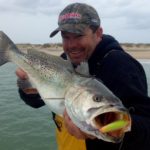
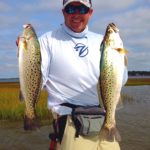
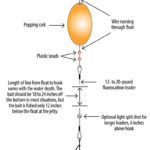
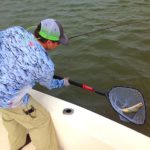



Be the first to comment